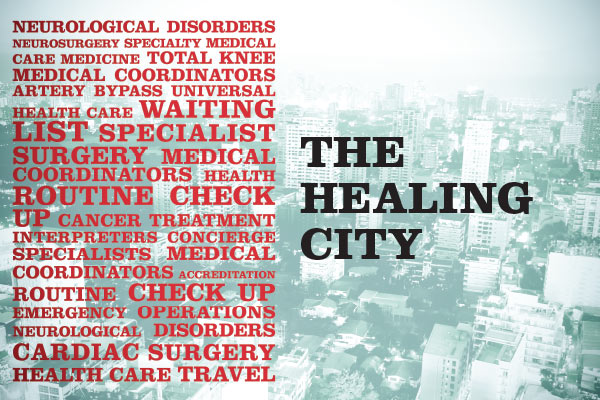With a highly competitive international healthcare system that is the envy of many western countrie, Bangkok has developed reputation as a medical tourist destination. By Mark Bibby Jackson / Photo by Nick McGrath
David Towers walked into a hospital in Cambodia for what he assumed was a routine medical check up. That was where the drama started.
“They carried out a series of standard tests and told me I’d suffered a heart attack,” Towers says.
While detaining him for further tests, the hospital summoned his wife and asked her to pay for a three-night stay.
“I lay in bed feeling like [a] hypochondriac for three days,” he says. “Nurses kept telling me I looked fine, but the doctor insisted I was near death’s door.”
Eventually, the fortysomething Scottish expat evacuated to Thailand where an ambulance was waiting at the airport to rush him to Bangkok Hospital. On arrival, he was wired up to machines by a team of heart experts in the Accident and Emergency Unit. Within minutes they diagnosed that there was nothing wrong and he had not suffered a heart attack.
Towers’ hospital bill, which amounted to around $18,000, was covered by his medical insurance — not that that covers the stress and anguish caused by the initial misdiagnosis.
The Hospital of Choice
Stories like this explain why expats across the region choose Thailand for both routine and emergency procedures.
“It’s not uncommon for a patient to come here from one of those countries [Vietnam, Myanmar and Cambodia] and get a different diagnosis or treatment,” says Kenneth Mays, senior director of hospital marketing and business development at Bumrungrad International Hospital.
The odds of an accurate diagnosis are higher in Thailand, but that doesn’t mean patients from elsewhere should jump on a plane for basic medical care.
“You should have a doctor you can see about your routine aches and pains close to home,” Mays says. “If you run into more serious problems, patients should consider coming to a hospital like ours.”
Ruben Torel founded Medeguide, an online directory that allows users to search for top doctors at leading international hospitals around the world. He says Bumrungrad is by no means alone in the standard of medical care it provides its patients.
“The top international hospitals in Thailand are competitive with those you would find in Europe, the US and Australia,” he says.
Regional Migration
Bangkok also stands out in Southeast Asia for the level of service at its hospitals.
“The top international hospitals employ an army of support staff, including interpreters, concierge services and even valet parking,” Torel says.
Another advantage is speed. In Bangkok, visitors can walk into a hospital and see a specialist quickly, something Torel says is “unheard of in other parts of the world”. Patients sometimes arrive from countries where universal health care also means unseemly wait times.
All clinical doctors are Thai, as they have to pass medical examinations in the Thai language, but many train overseas and know the needs of international patients. Some hospitals have foreign medical coordinators and others — including Bumrungrad, Bangkok Hospital, BNH Hospital and Samitivej — are accredited by the Joint Commission International, the US-based agency regarded as the gold standard for healthcare providers worldwide.
That helps Bangkok attract expats as well as locals from neighbouring countries.
According to Torel, Cambodians and Burmese come for diagnostics and specialty medical services, like cancer treatment, cardiac surgery and neurological disorders. Vietnamese are much more selective, and tend to travel for cancer treatment, neurosurgery and specialty medicine.
“Our medical costs are typically far less than what might be found in Europe or America,” says Dieter Burckhardt, assistant marketing communications and branding manager of Bangkok Hospital.
Spoilt for Choice
The number of international-standard hospitals and the range of treatments and services they provide has created a very competitive environment. Local Thais make it a point to shop around for the best value, creating a beneficial system that trickles down to overseas customers, according to Mays.
“The international patients get the same prices as locals and they benefit from that competition,” he says.
But Torel says the playing field is not quite so level.
“While there are rules and regulations against dual pricing, any expat who lives in Thailand will tell you what’s on paper and what’s done in practice are two very different things,” he says. “Hospitals are not immune to this practice, and even if the hospital’s prices are fixed, doctors’ fees are not.”
And with so many hospitals marketing themselves as ‘international’, it can be difficult to sort the wheat from the chaff.
“It’s a buyer’s market and from a consumer perspective that’s a good thing, but from a healthcare consumer perspective, too much choice can be a confusing thing,” says Torel, who established Medeguide in response to hearing “thousands” of patients asking for the same thing — the name of a good doctor
source: http://www.asialifemagazine.com / Home / January 31st, 2013





